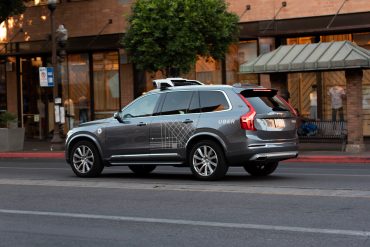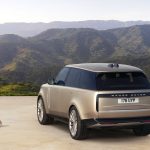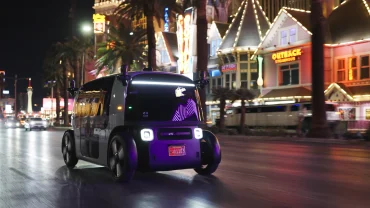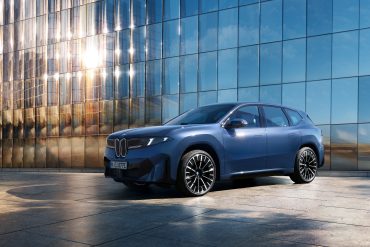
- Mobility Tech
Uber Launches First Driverless Passenger Service in Phoenix
5 minute read

Uber’s autonomous vehicle service in Phoenix advances self-driving technology toward mainstream commercial passenger operations
Three Key Facts
- Uber launches driverless passenger service in Phoenix, Arizona, marking the company’s first autonomous vehicle operations on public roads without safety drivers
- Healthcare AI adoption reaches 70% of organizations piloting or implementing generative AI solutions for workflow automation and enhanced diagnostics
- Spanish-speaking patients face higher infection risks during hospital stays, with Kaiser Permanente study revealing significant healthcare disparities despite interpreter services
Introduction
Uber Technologies Inc. achieves a breakthrough in autonomous driving as its self-driving vehicles begin transporting passengers without safety drivers on Phoenix streets. The pilot program represents the ride-hailing giant’s most ambitious step toward commercializing autonomous vehicle technology in partnership with Aurora Innovation.
This deployment marks a pivotal moment for the transportation industry, demonstrating how companies are moving beyond testing phases to real-world passenger operations. The initiative signals broader technological transformation occurring across multiple sectors, from transportation to healthcare.
Key Developments
The autonomous vehicles operate along pre-selected routes in specific Phoenix areas, carrying passengers in what Uber describes as a carefully controlled environment. According to Google News, the collaboration with California-based Aurora Innovation combines both companies’ technological investments in autonomous driving systems.
Uber plans to expand the service based on performance metrics and safety data collected during the initial phase. The company emphasizes learning and system refinement as primary objectives before broader deployment.
An Uber spokesperson stated that safety remains the top priority, with the company focusing on providing “the safest experience possible” during this testing phase. The program allows both companies to gather real-world data on autonomous vehicle performance in urban environments.
Market Impact
The autonomous vehicle sector experiences intensified competition as multiple companies race to establish market dominance. Uber’s move positions the company ahead of competitors still conducting safety-driver testing phases.
Healthcare technology sectors demonstrate parallel growth patterns, with the healthcare software and technology industry projecting EBITDA growth rates of 14% for software and 20% for data analytics from 2023 to 2028. This growth reflects broader automation trends affecting multiple industries.
Investment flows into both autonomous vehicles and healthcare AI indicate investor confidence in automation technologies. Companies successfully deploying real-world applications gain competitive advantages in attracting additional funding and partnerships.
Strategic Insights
The deployment represents a shift from testing to revenue-generating operations, potentially accelerating industry-wide adoption timelines. Companies with functioning autonomous systems can begin building customer trust and operational expertise ahead of full commercial launches.
Healthcare organizations mirror this pattern, with over 70% now piloting or implementing generative AI solutions for workflow automation and diagnostic enhancement. The parallel adoption across sectors suggests automation technologies are reaching practical viability thresholds.
Both industries face similar challenges in ensuring safety, regulatory compliance, and public acceptance. Success in controlled deployments becomes crucial for scaling operations and securing regulatory approvals for broader implementation.
Expert Opinions and Data
Industry observers note that real-world passenger operations provide data unavailable through traditional testing methods. The Phoenix deployment allows Uber and Aurora to refine algorithms based on actual passenger interactions and urban traffic patterns.
Healthcare parallels emerge in precision medicine research, where studies involving over 62,000 adults demonstrate improved accuracy in kidney disease risk assessment using dual-biomarker approaches. This research highlights how data-driven improvements enhance safety and effectiveness across technology applications.
Cristine Lacerna, senior regional director of infection prevention at Kaiser Permanente Northern California, emphasizes the importance of addressing systemic inequities, stating the need to “keep raising our voices about the issue of inequities as a driving factor for some of our patients and communities being at risk for or getting infections.” Her comments reflect broader challenges in ensuring technology benefits reach all populations equitably.
Conclusion
Uber’s driverless passenger service launch represents a significant milestone in autonomous vehicle commercialization, moving the industry beyond testing toward practical implementation. The Phoenix program provides a template for controlled deployment of autonomous technologies while maintaining safety standards.
The convergence of automation advances across transportation and healthcare sectors demonstrates how companies are successfully transitioning from experimental phases to operational deployment. These developments signal a broader transformation in how technology companies approach real-world application of advanced systems.








